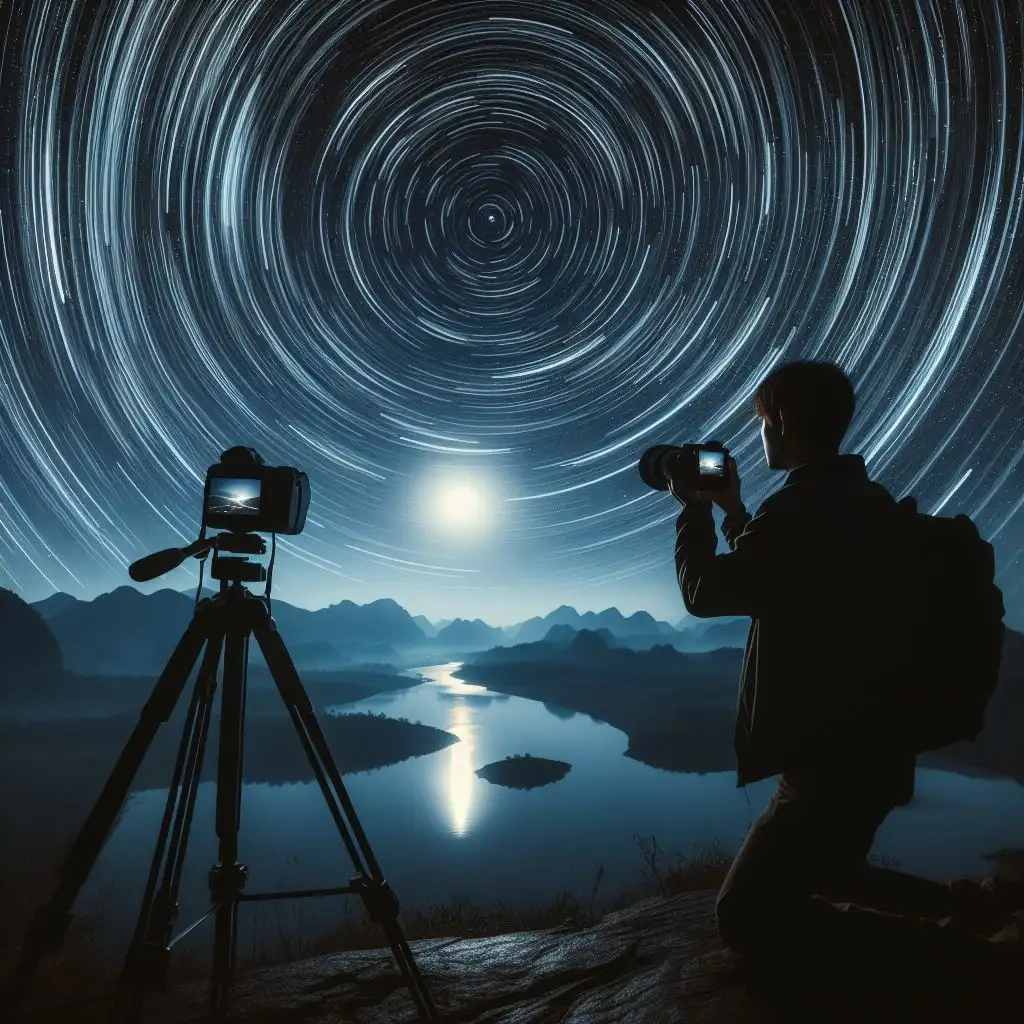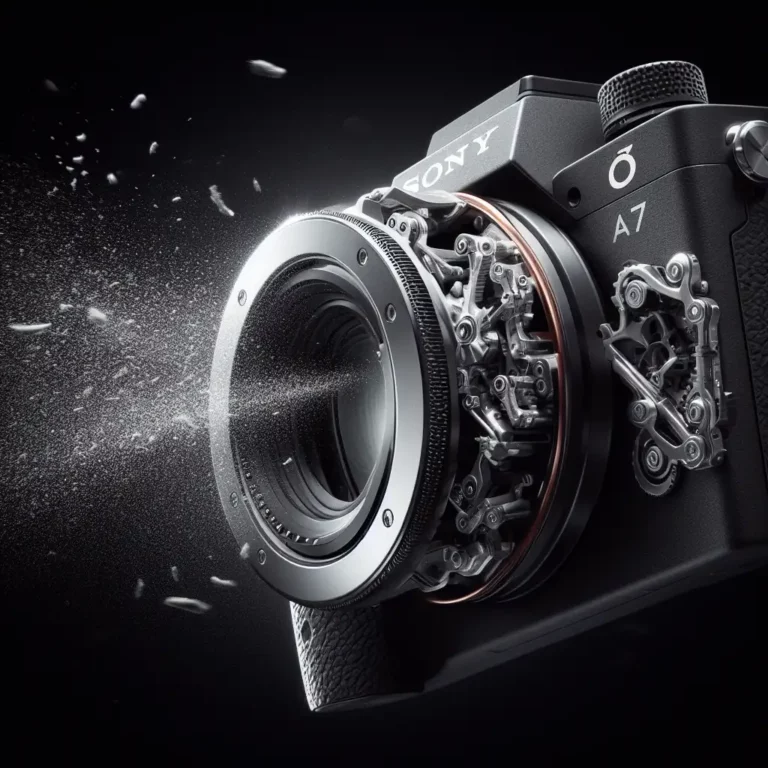Are Mirrorless Cameras Good for Night Photography: Unlock the Night

Are you a night photography enthusiast, eager to capture breathtaking shots under the moonlit sky?
If you’re wondering whether mirrorless cameras are the perfect companion for your nocturnal adventures, let me shed some light on the matter.
Mirrorless cameras have proven themselves to be an excellent choice for night photography.
Their exceptional low light performance allows you to capture stunning images even in the darkest of environments.
With the ability to achieve wider apertures and control depth of field, mirrorless cameras offer you the opportunity to create mesmerizing bokeh effects that add a touch of enchantment to your night shots.
So, if you’re ready to take your night photography to new heights, mirrorless cameras are definitely worth considering.
Key Takeaways
- Mirrorless cameras have excellent low light performance, allowing for brighter images in dark conditions.
- The ability to achieve wider apertures with mirrorless cameras helps to control depth of field and create mesmerizing bokeh effects.
- White balance settings can be adjusted in mirrorless cameras to ensure accurate color reproduction in low light situations.
- Experimenting with different ISO levels and utilizing advanced noise reduction features can help control noise and improve the overall performance of mirrorless cameras in night photography.
Table of Contents
- Key Takeaways
- Advantages of Mirrorless Cameras for Night Photography
- Low Light Performance of Mirrorless Cameras
- Importance of Wide Apertures in Night Photography
- White Balance Settings for Accurate Color Reproduction
- ISO Settings and Noise Control in Mirrorless Cameras
- Enhancing Depth of Field and Bokeh Effect With Mirrorless Cameras
- Tips for Setting Up Mirrorless Cameras for Night Photography
- Comparing Mirrorless Cameras to DSLRs for Night Photography
- Conclusion
Advantages of Mirrorless Cameras for Night Photography
Mirrorless cameras offer a range of advantages for night photography enthusiasts. When it comes to capturing images in low light conditions, mirrorless cameras excel. Their ability to handle low light situations is due to their wide apertures, resulting in brighter images. Furthermore, mirrorless cameras allow for the use of lenses with low f-stops, enabling a shallow depth of field and enhanced bokeh effect.
Achieving accurate color reproduction in challenging lighting conditions is possible by adjusting the white balance settings. Increasing the ISO settings can also improve low light performance, although caution must be exercised to avoid excessive noise. With mirrorless cameras, photographers can capture stunning night photographs with exceptional image quality and effective noise reduction techniques.
Low Light Performance of Mirrorless Cameras
To improve your low light photography, take advantage of mirrorless cameras’ impressive low light performance. Mirrorless cameras excel in capturing images in challenging lighting conditions, making them an excellent choice for night photography. Their high ISO capabilities allow for capturing detailed images in low light situations, while maintaining minimal noise. Additionally, mirrorless cameras offer the flexibility to use slower shutter speeds, which is crucial for capturing night scenes without blur.
Here is a table highlighting the key factors that contribute to the low light performance of mirrorless cameras:
| Factors | Description |
|---|---|
| High ISOs | Mirrorless cameras have the ability to handle high ISO settings, allowing for brighter images in low light conditions. |
| Shutter Speed | Mirrorless cameras enable slower shutter speeds, which is essential for capturing night scenes without motion blur. |
| Noise Reduction | Advanced noise reduction technology in mirrorless cameras helps in minimizing noise in low light images. |
Importance of Wide Apertures in Night Photography
Wide apertures play a crucial role in capturing stunning night photographs. In the context of night photography, mirrorless cameras with their low F-stop values offer the advantage of wider apertures, allowing more light to hit the sensor. This results in brighter images even in low light conditions.
By choosing lenses with low F-stop values, you can enhance the light gathering capabilities of your mirrorless camera, ensuring optimal exposure in challenging lighting situations. Additionally, wide apertures aid in achieving a shallow depth of field, creating a blurred background effect that draws attention to the subject. They also enhance the bokeh effect, adding aesthetic appeal to your night photographs.
Moreover, wide apertures allow for faster shutter speeds, reducing the risk of blurry images caused by camera shake. When it comes to night photography, the importance of wide apertures can’t be overstated as they enable you to capture stunning images with clarity and detail.
White Balance Settings for Accurate Color Reproduction
Achieve accurate color reproduction in your night photographs by adjusting the white balance settings on your mirrorless camera. White balance is crucial for capturing the true colors of the scene, especially in low light situations. By selecting the appropriate white balance setting, you can ensure that the colors in your images are rendered accurately.
Different lighting conditions can introduce color casts or tints, but adjusting the white balance can counteract these effects and produce more natural-looking images. Mirrorless cameras offer various white balance options, such as daylight, cloudy, shade, tungsten, fluorescent, flash, and custom settings. Experimenting with these settings can help you achieve unique color tones and desired visual aesthetics.
It’s important to understand that white balance adjustments affect how camera sensors interpret color temperature, ensuring accurate color reproduction in your night photography.
ISO Settings and Noise Control in Mirrorless Cameras
Adjust the ISO settings on your mirrorless camera to control noise and improve low light performance. The ISO settings play a crucial role in night photography, allowing you to find the optimal balance between noise and exposure. Here’s how you can effectively control noise in your mirrorless camera’s ISO settings:
-
Experiment with different ISO levels: Mirrorless cameras offer a wide range of ISO settings, allowing you to adapt to varying lighting conditions during night photography. Start with a lower ISO value and gradually increase it until you achieve the desired exposure without excessive noise.
-
Utilize advanced noise reduction features: Modern mirrorless cameras come equipped with advanced noise reduction capabilities. These features help to minimize noise at higher ISO values, allowing for better low light performance while maintaining image quality.
-
Understand the camera’s ISO limitations: Each camera system has its own ISO limitations when it comes to noise control. Familiarize yourself with your mirrorless camera’s ISO performance to know the highest ISO value you can use without compromising image quality.
-
Post-processing noise reduction: If you still encounter noise in your night photographs, consider utilizing post-processing software to further reduce noise and enhance image quality.
Enhancing Depth of Field and Bokeh Effect With Mirrorless Cameras
To enhance depth of field and create a beautiful bokeh effect, mirrorless cameras offer a range of options for night photography enthusiasts. With the ability to use wide and fast lenses, mirrorless cameras allow for wider apertures, resulting in a shallower depth of field. This allows you to isolate your subject and blur the background, creating a visually pleasing bokeh effect.
The low F-stop values of these lenses, combined with the wide apertures, enable you to capture more light in low light conditions, enhancing the overall quality of your night photographs.
Additionally, mirrorless cameras provide the flexibility of adapting different lens mounts, giving you access to a wide variety of lenses that can further enhance depth of field and bokeh effects in your night photography.
Tips for Setting Up Mirrorless Cameras for Night Photography
Maximize your camera’s performance for night photography with these essential setup tips for mirrorless cameras:
-
Use Manual Exposure Mode: Take full control over exposure settings to capture the perfect shot in low light conditions.
-
Adjust ISO Settings: Start with ISO 1600 and make adjustments based on your lens and the lighting conditions. Find the right balance to minimize noise while maintaining image quality.
-
Optimize Display Settings: Configure your camera’s display to minimize brightness and shooting overlay data. This will enhance visibility in the dark and help you compose your shots accurately.
-
Customize LCD Text: Set the camera’s LCD to display white text on a black background. This reduces disruption and enhances night vision, allowing you to focus on capturing stunning night photographs.
Comparing Mirrorless Cameras to DSLRs for Night Photography
When comparing mirrorless cameras to DSLRs for night photography, you’ll find notable differences in their performance and features.
Mirrorless cameras excel in low light conditions due to their ability to handle high ISO settings and wide aperture lenses. The absence of a mirror allows for a more compact camera body, making it easier to carry and maneuver during night shoots. Additionally, mirrorless cameras offer features such as silent shooting mode and in-body image stabilization, which are advantageous for capturing sharp and undisturbed images in low light.
On the other hand, DSLRs have larger sensors and optical viewfinders, providing a more traditional shooting experience. Their robust and ergonomic design makes them suitable for extended shooting sessions.
While both mirrorless cameras and DSLRs have their strengths, it ultimately comes down to personal preference and specific requirements in night photography.
Conclusion
In conclusion, mirrorless cameras are an excellent choice for night photography due to their exceptional low light performance and ability to achieve wider apertures.
With the flexibility to choose lenses with low F-stops, you can create stunning images with a shallow depth of field and beautiful bokeh effect.
By adjusting the white balance settings and managing the ISO, you can ensure accurate color reproduction and minimize noise in your night photographs.
Overall, mirrorless cameras offer a range of features that can elevate your nighttime shots to a whole new level.





